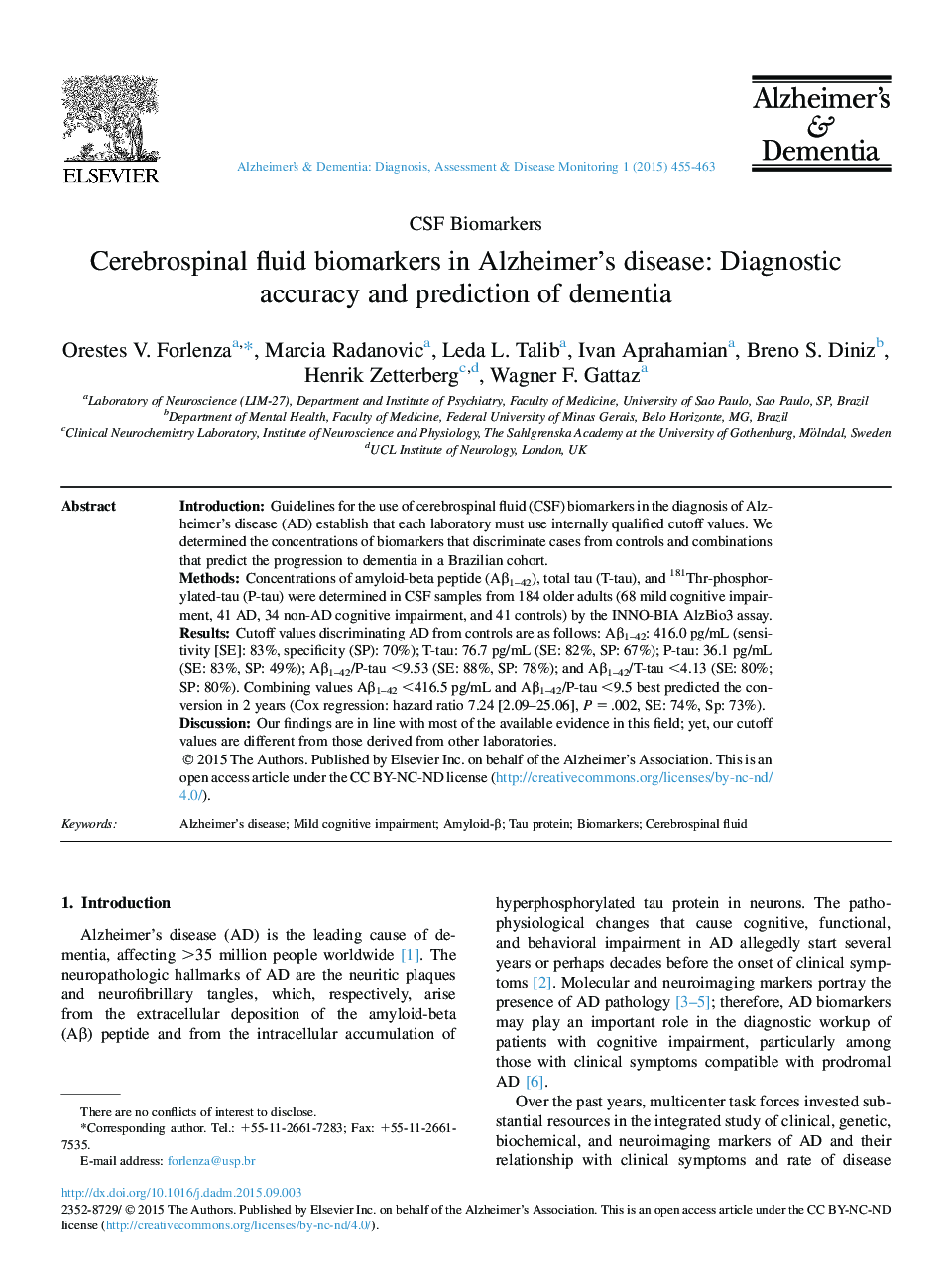| Article ID | Journal | Published Year | Pages | File Type |
|---|---|---|---|---|
| 3031986 | Alzheimer's & Dementia: Diagnosis, Assessment & Disease Monitoring | 2015 | 9 Pages |
IntroductionGuidelines for the use of cerebrospinal fluid (CSF) biomarkers in the diagnosis of Alzheimer's disease (AD) establish that each laboratory must use internally qualified cutoff values. We determined the concentrations of biomarkers that discriminate cases from controls and combinations that predict the progression to dementia in a Brazilian cohort.MethodsConcentrations of amyloid-beta peptide (Aβ1–42), total tau (T-tau), and 181Thr-phosphorylated-tau (P-tau) were determined in CSF samples from 184 older adults (68 mild cognitive impairment, 41 AD, 34 non-AD cognitive impairment, and 41 controls) by the INNO-BIA AlzBio3 assay.ResultsCutoff values discriminating AD from controls are as follows: Aβ1–42: 416.0 pg/mL (sensitivity [SE]: 83%, specificity (SP): 70%); T-tau: 76.7 pg/mL (SE: 82%, SP: 67%); P-tau: 36.1 pg/mL (SE: 83%, SP: 49%); Aβ1–42/P-tau <9.53 (SE: 88%, SP: 78%); and Aβ1–42/T-tau <4.13 (SE: 80%; SP: 80%). Combining values Aβ1–42 <416.5 pg/mL and Aβ1–42/P-tau <9.5 best predicted the conversion in 2 years (Cox regression: hazard ratio 7.24 [2.09–25.06], P = .002, SE: 74%, Sp: 73%).DiscussionOur findings are in line with most of the available evidence in this field; yet, our cutoff values are different from those derived from other laboratories.
